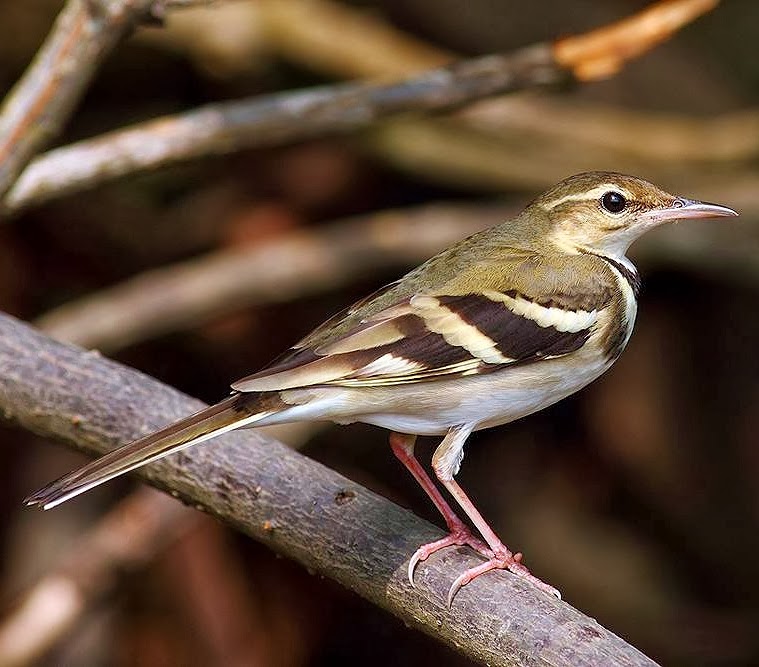 |
| Photo by P. Supat (Internet Bird Collection) |
Common name:
forest wagtail (en); alvéola-dos-bosques (pt); bergeronnette de forêt (fr); lavandera forestal (es); baumstelze (de)
Taxonomy:
Order Passeriformes
Family Motacillidae
Range:
This species breeds from extreme south-eastern Russia and northern Japan, through Korea and north-eastern China and into south-eastern China. They migrate south to winter in southern China, Indochina, Indonesia and south-western India.
Size:
These birds are 16-18 cm long and weigh 16-17 g.
Habitat:
The forests wagtail is almost exclusively found in forested habitats, including both evergreen and deciduous forests in both temperate and tropical areas. In some areas they favour oak Quercus sp. dominated forests. They also use second growths, mangroves, coffee plantations, arable land and urban areas. They are present from sea level up to an altitude of 1.800 m.
Diet:
They forage mostly on the ground, taking small invertebrates such as ants, beetles, grasshoppers, spiders, snails and worms.
Breeding:
Forest wagtails breed in April-July. The female builds the nest alone, consisting of a compact cup made of twigs, leaves, fine grass and rootlets, held together with moss and spider webs and lined with hair, wool, fur and moss. It is placed on an horizontal tree branch, near the trunk, usually 4-5 m above the ground. The female lays 4-5 whitish eggs with brown spots, which she incubates alone for 13-15 days while the male provides her food. The chicks are fed by both parent and fledge 10-12 days after hatching.
Conservation:
IUCN status – LC (Least Concern)
This species has a very large breeding range and is reported to be locally common. The population is suspected to be stable in the absence of evidence for any declines or substantial threats.







